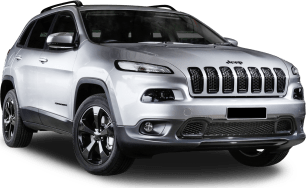The cabin has loads of passenger space and it feels roomy up front. It’s also an easy car to get in and out of, which I like. I don't love the comfort of the front seats, though, as the seat backs cave too far inwards, even with the lumbar extended. Not conducive to great posture.
The back seat is like a lounge, though, and in this instance I'd prefer to be a passenger princess than the driver in this car.
In the back row, the head- and legroom is excellent and middle seaters will be comfortable thanks to the flat floor.
Individual storage is very good up front, the centre console playing the hero with its large shelf underneath. There are also two cupholders, a utility tray and a cute little nook for any small items like keys.
The middle console is medium-sized, as is the glove box and both doors have storage bins and a drink bottle holder.
In the back seat, there are map pockets, two cupholders in a fold down armrest and shallow storage bins in each door.
The other amenities in the back row are okay and you get directional air vents and reading lights.
You get a good storage capacity with the 600L boot and the level loading space makes it easy to slide gear in and out. The back seat has a 60/40 split if you need to boost your storage capacity. There’s no spare tyre in this model, just a tyre repair kit but you do get a powered tailgate.
The practicality of the cabin is hurt by the usefulness of some of its tech, which is a shame since the cabin on a whole is fairly good.
The 12.3-inch touchscreen multimedia system looks great and is fairly easy to use but the screen can occasionally lag. There are a lot of functions buried in the system and I miss having physical buttons for this reason. I sometimes don't bother with the heat and ventilation functions for the front seats because it isn't simple to access them.
You don’t get built-in sat nav or digital radio in this model but you do have wired Apple CarPlay and Android Auto. I have beef with the CarPlay as the USB-A port for it is on the passenger side, not the driver's side. The CarPlay and Bluetooth connectivity also dropped out a lot, which I found frustrating, especially when I was using it to navigate.
Charging options are okay with each row getting two USB-A ports. The front also features a wireless charging pad and a 12-volt outlet but you miss out on faster USB-C sockets.






.png)












































.png)























 copy.png)
















